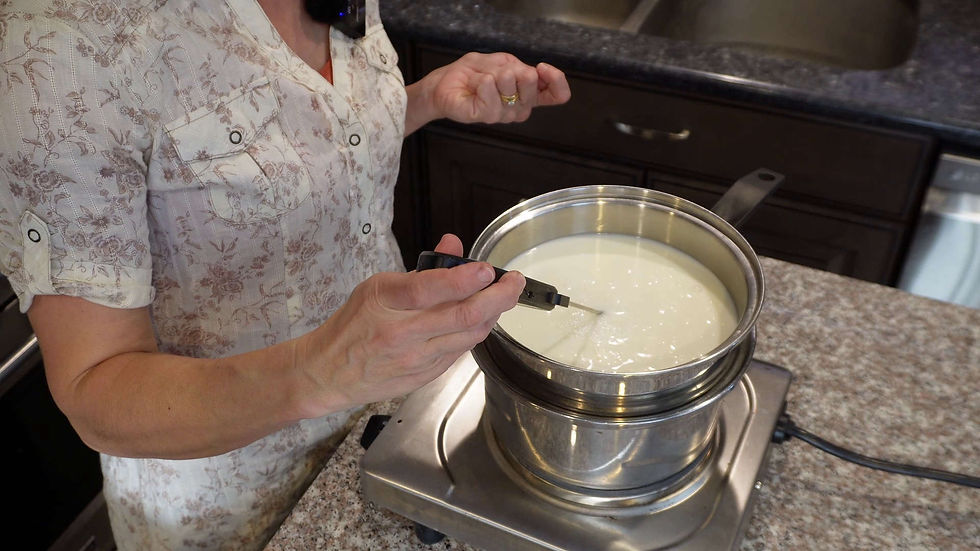How to Pasteurize Raw Milk
- Marie Overton

- Dec 14, 2020
- 3 min read
Updated: Feb 20, 2025
Knowing how to pasteurize milk can be an important skill. If produced under sanitary conditions raw milk has many health benefits. Some of those benefits include the ability to kill pathogens and enhance the immune system. When eating raw milk there is always the possibility of microorganism contamination. It is uncommon but each individual has to determine the risk versus benefit for their family. Certain people are more at risk of issues than others. Primarily pregnant women, children 5 years old or younger, older adults, and those with weakened immune systems. Home pasteurization can be a good safeguard against the possible risk of illness.
Pasteurization is the process of heating milk to a high enough temperature for a long enough time to kill illness-causing bacteria. Pasteurized milk is milk that has gone through this process. The nutritional value of the milk is maintained and it is still an excellent source of calcium and protein.
Pasteurize raw milk Preparation
The first step is preparation. Sanitize your work surface and all your supplies. Be sure to wash your hands. Boil your jars, lids, and funnel for 10 or more minutes (at sea level) to sanitize fully. Don't forget to adjust for your elevation. I also like to sanitize the tips of my tongs by laying them across a wooden spoon so just the tips are in the water.

Sterilize milk jars
Use a double boiler or place a small saucepan or bowl inside a large pan or slow cooker (see my video about how to make your own double boiler).
Put water in the bottom pan of the double boiler and heat it. The heat should be increased gradually so that you do not heat the milk too quickly.

Pasteurization
Pour the raw milk into the top pan. Do not pasteurize more than a gallon at a time. Heat it over the simmering water, stirring constantly.
You have two options of temperatures to heat your milk to for proper pasteurization. Use a good thermometer to assure accuracy.
Heat to 150° F for 30 minutes (63° C).
Heat to 162° F for 15 seconds (72° C).

The timing does not begin until after you have reached the designated temperature. If at any point during the time, either 15 seconds or 30 minutes, the temperature falls below the designated temperature then you must re-increase the temperature to the target temperature and restart the timer.
For the purpose of the video, I used the second method and heated the milk to 162° F for 15 seconds.
Use a thermometer to determine when the temperature reaches 162° F and keep it at this temperature for 15 seconds (or 150° F for 30 minutes).

The next step is to rapidly cool the milk using an ice bath. You want to cool the milk to 68° F (20° C), stirring constantly. Make sure none of the water from the ice bath accidentally gets into the milk and contaminates it.

Once the milk is properly cooled, transfer it into your sanitized container, place it in the refrigerator, and continue to cool to 40° F. Label with the date of pasteurization and use within 2 weeks.
If you have any questions or comments please place them below.
For helpful videos follow this link to our YouTube channel: https://www.youtube.com/channel/UCClHdEfsiSI8nmUbUoa6lKQ
























Comments